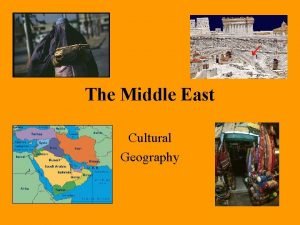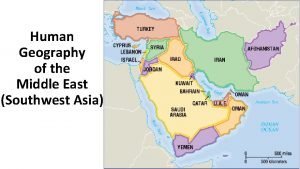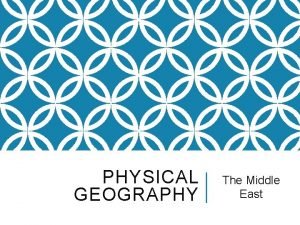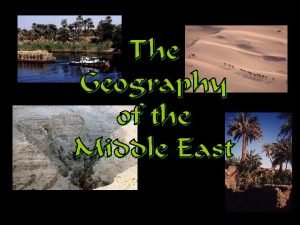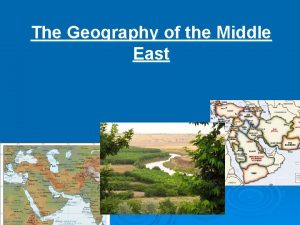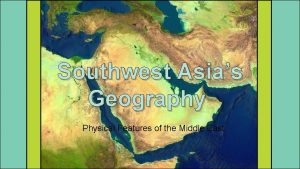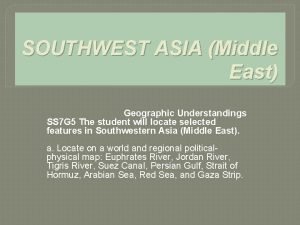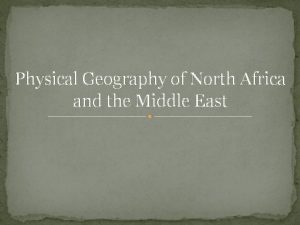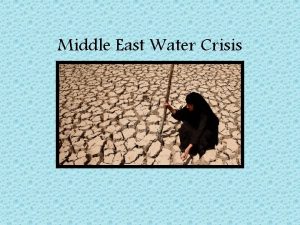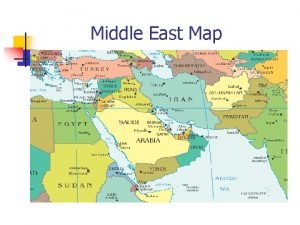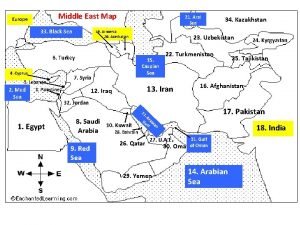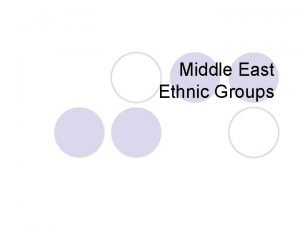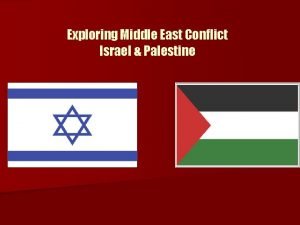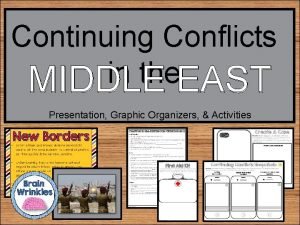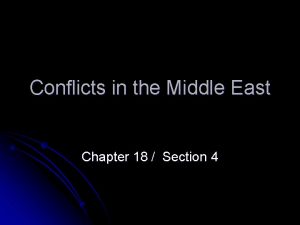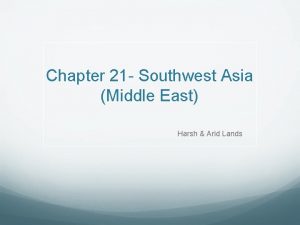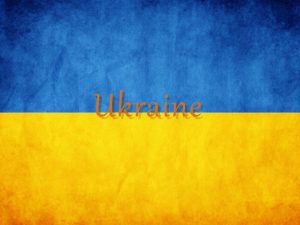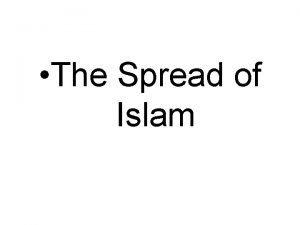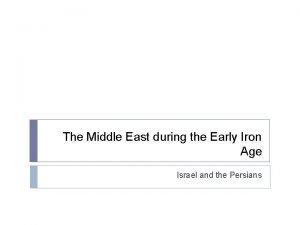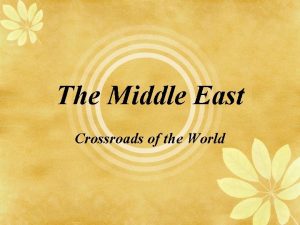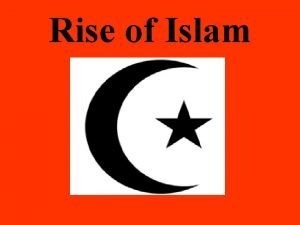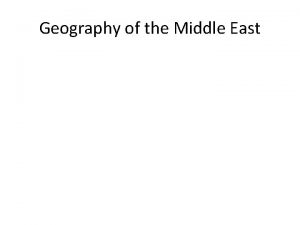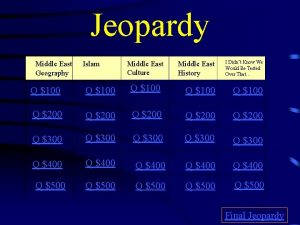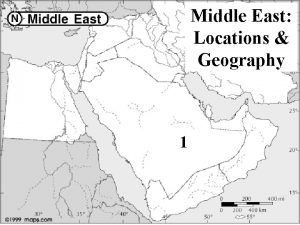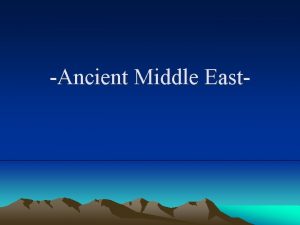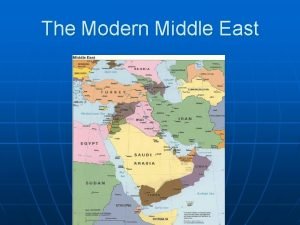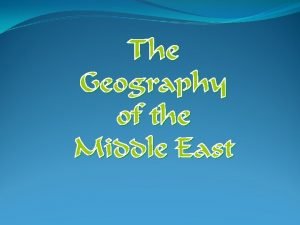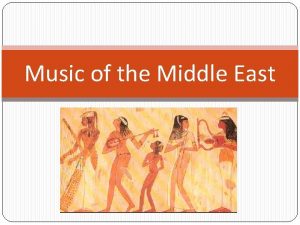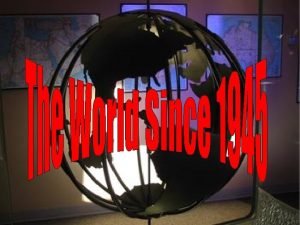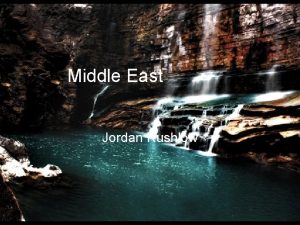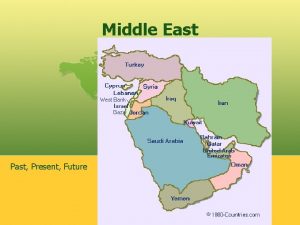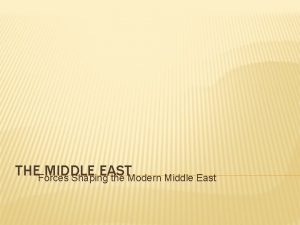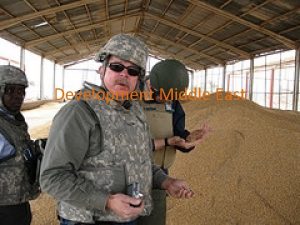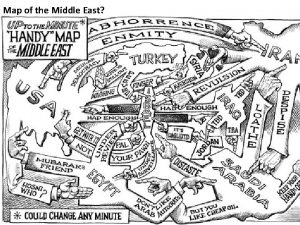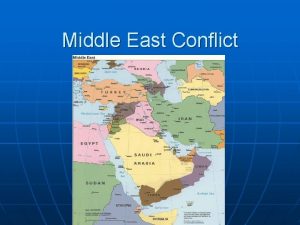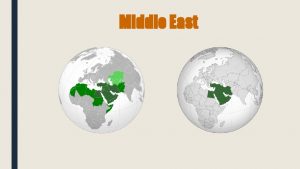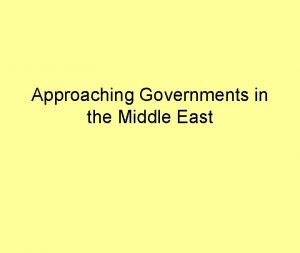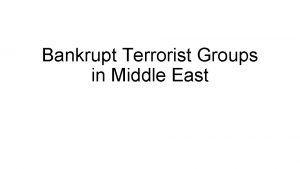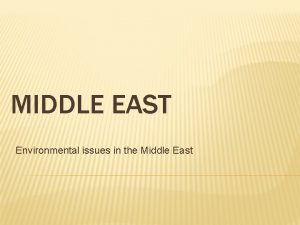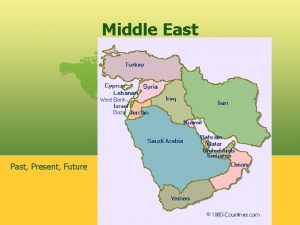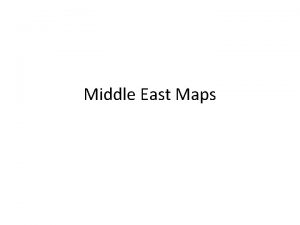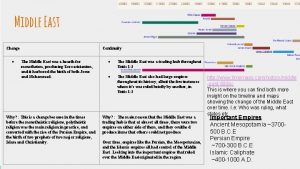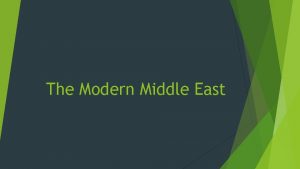The Geography of the Middle East Unit 1

























- Slides: 25

The Geography of the Middle East

Unit 1 Focus Ø The focus of this unit is how physical and cultural geography shape the environment, nations, and people of the Middle East

Ø The Middle East is also called Southwest Asia, because it is the southwest region of the Asian continent l This is important to know because different resources may call this region by either name l Middle East = Southwest Asia = Middle East Southwest Asia The Middle East

All of Asia Southwest Asia

Location of the Middle East Ø While the location of this region is not directly addressed in any of our standards or elements, it plays a direct and important role in the history and development of the region (as important, possibly more so, than the lack of water and abundance of oil in the region)

Ø Southwest Asia, (The Middle East), is the landmass that connects the three major continents found primarily in the Eastern Hemisphere: Europe, Asia, & Africa

Ø Europe lies to the North and West of the Middle East l The Southwest Asian nation of Turkey borders the European nations of Georgia and Armenia to the East, TURKEY Georgia Armenia

It shares a portion of the Mediterranean Sea’s coastline with Southern Europe to the west, touching Greece at it’s northern point. This the thin strip of land between Turkey and Greece has been important in connecting Asia and the Silk Roads to Western Europe. GREECE TURKEY

The city of Istanbul, which was at one time called Byzantine & another time called Constantinople, lies almost halfway along this connecting land strip and was an important and historic stop along these international trade routes

Ø The continent of Asia, of course, continues out to the North and East from Southwest Asia (Middle East), eventually reaching out through India to the Indian Ocean and the Pacific Ocean through China Pacific Ocean Middle East ASIA Indian Ocean

Ø The continent of Africa lies to the South and West of the Middle East l The Southwestern Asian nation of Israel borders the Northeastern African nation of Egypt, both areas again share portions of the Mediterranean coastline ASIA Middle East AFRICA

Ø The unique location of the Middle East region has had major implications on the history and development of the area. l Far from being isolated, its connections to all three continents has led to its being affected in many different ways and areas through the trade and travel that passed through along its way around the globe ~ religion, culture, art, government, technology.

Ø These outside influences have significantly driven the shape of both the history and present of the Middle Eastern Region and will continue to impact them as the people their head into the future.

Geographic Understandings of the Middle East Standards, Elements, Essential Questions, Etc. Ø SS 7 G 5: Locate selected features in Southwest Asia (Middle East). a. Locate on a world and regional political-physical map: Euphrates River, Jordan River, Tigris River, Suez Canal, Persian Gulf, Strait of Hormuz, Arabian Sea, and Red Sea. b. Locate on a world and regional political-physical map: Afghanistan, Iraq, Israel, Kuwait, Saudi Arabia, Syria, Turkey, Gaza , and West Bank. Strip

Ø SS 7 G 5(A) – The student will locate on a world and regional political-physical map: the Euphrates River, Jordan River, Tigris River, Suez Canal, Persian Gulf, Strait of Hormuz, Arabian Sea, Red Sea, and the Gaza Strip l We will also be including on our map: the Arabian Desert, Libyan Desert , Syrian Desert, Caspian Sea, Black Sea, and the Mediterranean Sea

Ø SS 7 G 5(B) The student will locate on a world and regional political-physical map, the nations of Afghanistan, Iraq, Israel, Saudi Arabia, and Turkey l We will also be adding to our map the nations of Syria, Lebanon, Kuwait, Yemen, and Oman

Ø SS 7 G 5 (A) & (B) Enduring Understanding: Every place has unique geographical features that influence how cultures develop. SS 7 G 5 (A) & (B) Essential Question: How does the physical geography of Southwest Asia contribute to its culture? Ø Why are people attracted to certain regions in which live? Ø

Ø SS 7 G 6: SS 7 G 6 Explain the impact of environmental issues across Southwest Asia (Middle East). a. Explain how water pollution and the unequal access to water impacts irrigation and drinking

Ø SS 7 G 6 (A) & Enduring Understanding: Limited resources are often a basis for power and conflict Ø SS 7 G 6 (A) Essential Question: How does the available water supply influence the development of Southwest Asia, (The Middle East)

Ø SS 7 G 7: The student will explain the impact of location, climate, physical characteristics, distribution of natural resources and population distribution on Southwest Asia (Middle East)

Ø SS 7 G 7(A) The student will explain how the distribution of oil has affected the development of Southwest Asia (Middle East)

Ø SS 7 G 7 Explain the impact of location, climate, physical characteristics, distribution of natural resources, and population distribution on Southwest Asia (Middle East). a. Describe how the deserts and rivers of Southwest Asia (Middle East) impact trade and affect where people live.

Ø SS 7 G 7 (A) & (B) Enduring Understanding: Limited resources are often a basis for power and conflict Ø SS 7 G 6 (A) Essential Question: How has the discovery of oil affected the people of the Middle East?


 Laissez faire theory
Laissez faire theory Cultural geography of the middle east
Cultural geography of the middle east Human geography of middle east
Human geography of middle east Physical geography of middle east
Physical geography of middle east What is the horizontal movement of air called
What is the horizontal movement of air called East is east and west is west
East is east and west is west Middle east natural resources
Middle east natural resources Why is it called the middle east
Why is it called the middle east Inlet of indian ocean between africa and asia
Inlet of indian ocean between africa and asia Why is the middle east so dry
Why is the middle east so dry Physical features of the middle east map
Physical features of the middle east map Middle east countries and water
Middle east countries and water Middle east map
Middle east map Black sea on middle east map
Black sea on middle east map Ethnic groups in the middle east
Ethnic groups in the middle east Middle east war
Middle east war Gosforth east middle school
Gosforth east middle school Conflicts in the middle east comprehension check
Conflicts in the middle east comprehension check Chapter 18 section 4 conflicts in the middle east
Chapter 18 section 4 conflicts in the middle east Why is the middle east so dry
Why is the middle east so dry Download biotime 7.0
Download biotime 7.0 Location of ukraine
Location of ukraine Middle east before islam
Middle east before islam Zoroastrianism teaching
Zoroastrianism teaching Crossroads of the world middle east
Crossroads of the world middle east Middle east before islam
Middle east before islam

